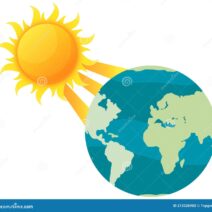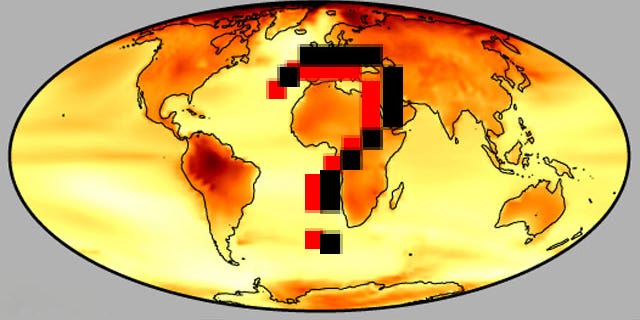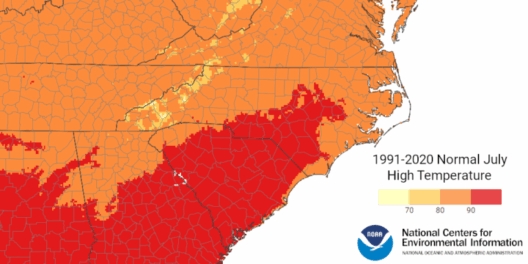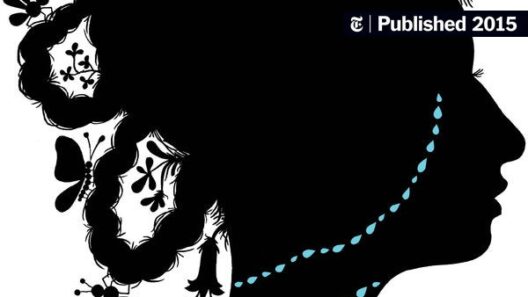Global warming has emerged as one of the most pressing challenges of our time. As the Earth’s average temperature rises, the impacts on ecological systems become increasingly severe and far-reaching. Scientists predict a myriad of consequences, some of which could become lethal to biodiversity, human health, and even the very fabric of our society. Understanding when global warming might cross a catastrophic threshold is crucial for both policymakers and the public.
At first glance, the data on global warming seem innocuous. However, the underlying trends unveil a grim reality. The Intergovernmental Panel on Climate Change (IPCC) projects that if current trajectories continue, we could witness an increase of 1.5 degrees Celsius compared to pre-industrial levels as early as 2030. This seemingly minor temperature rise harbors the potential to unleash drastic ecological imbalances. Should emissions remain unabated, the next several decades may see temperatures climb 2 degrees Celsius or more, a threshold that many scientists believe could set off a chain reaction of environmental disasters.
Historically, small changes in temperature can have profound implications. Consider this: the last ice age was merely 5 degrees Celsius cooler than today. As temperatures rise, so too does the potential for more frequent and severe weather episodes. Heatwaves, floods, hurricanes, and droughts are becoming more intense and frequent due to this overarching climate shift. It begs the question: at what point does global warming become more than just a series of inconvenient weather patterns? At what juncture does it morph into a lethal reality?
The answer lies not only in temperature increases but also in human adaptability and resilience. A wide array of scientists brings attention to the concept of tipping points—thresholds in the Earth’s climate system that, once crossed, can lead to irreversible damage. For instance, the melting of polar ice caps and the subsequent rise in sea levels may not only threaten coastal cities but displace millions. Indigenous communities, whose ways of life are interwoven with the natural environment, may be particularly vulnerable to such changes.
Biodiversity, too, is under siege. Ecosystems that have thrived for millennia are now experiencing unprecedented strains, leading to extinctions at an alarming rate. Coral reefs, often referred to as the ‘rainforests of the sea,’ are expected to lose more than 70% of their species by mid-century if the temperature continues to rise. This denouement would eliminate vital marine habitats and entire food chains, ultimately threatening human livelihoods dependent on marine resources.
Beyond environmental degradation, the implications for human health pose a dire concern. As the climate warms, we can expect an increase in heat-related illnesses, respiratory challenges due to worsened air quality, and the proliferation of vector-borne diseases. Regions that have never experienced conditions conducive to malaria or dengue fever may see these diseases emerge, resulting in public health crises as healthcare systems struggle to cope with new epidemics.
Global warming also threatens food security. As agricultural zones shift, fertility declines in previously arable lands. Water scarcity, driven by drought conditions, may cause crop failures, leaving many populations malnourished. Food systems are intricately linked; disruptions in one region can trigger cascading effects worldwide. Thus, the lethal ramifications of climate change extend beyond regions directly impacted—they resonate globally.
Unsurprisingly, discussions surrounding global warming also surface concerns about conflict and migration. As resources dwindle and territories become inhospitable, displaced populations may find solace in migrating to cooler areas, thereby escalating tensions in receiving countries. Historical evidence supports the correlation between environmental shifts and conflict; competition for scarce resources can lead to armed strife, compounding the challenges presented by climate hazards.
Despite these alarming forecasts, there remains a sliver of hope. Mitigation efforts and advancements in technology present opportunities to shift the trajectory towards a more sustainable future. Renewable energy sources—such as solar, wind, and hydropower—offer potential pathways to reduce greenhouse gas emissions drastically. Transitioning from fossil fuels to these cleaner alternatives could significantly mitigate the impending threats posed by global warming.
Furthermore, bolstering adaptive capacities in vulnerable regions can empower communities to withstand climatic shocks. This might involve enhancing infrastructure to withstand floods, improving water management, or investing in agricultural practices that ensure food security even in challenging weather conditions. By prioritizing resilience, societies can better safeguard against the lethal impacts of climate change.
Engaging public consciousness is essential in this endeavor. Advocacy aimed at informing individuals of their role in combatting climate change can facilitate grassroots movements. The collective action borne from increased awareness can influence policy decisions, leading to impactful legislation aimed at curbing emissions and fostering sustainable practices. The power of the populace, when harnessed, cannot be underestimated.
In summation, the question is not a matter of whether global warming will become lethal, but rather, to what extent and how swiftly it will occur. The dire predictions outlined provide a haunting glimpse into a future that may be our own making. A call to action resounds louder than ever; the time to act is now. As the world teeters precariously on the edge of a climatic precipice, humanity must unite to avert the dire consequences that await. With thoughtful choices, innovative solutions, and unwavering resolve, the collective fight against global warming can transform a lethal threat into an opportunity for regeneration and hope.








